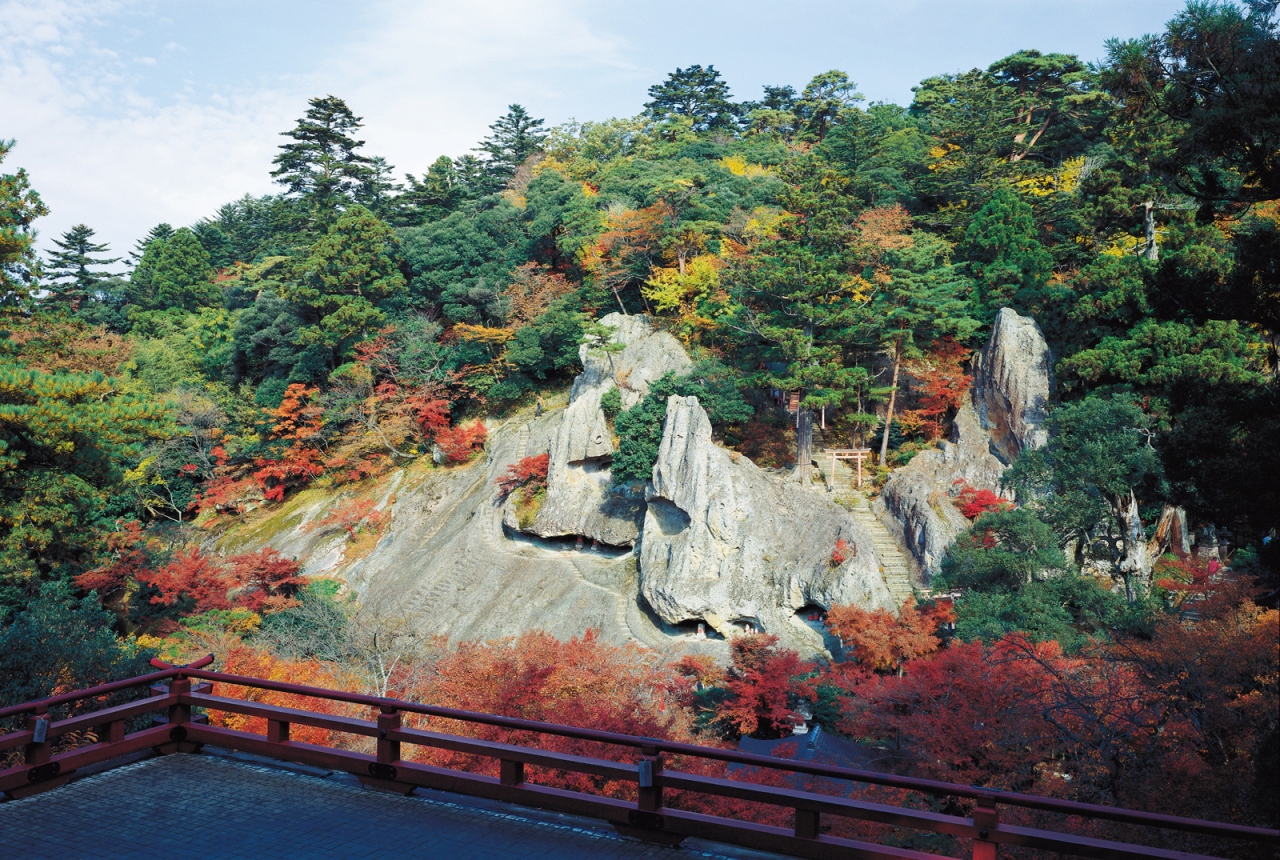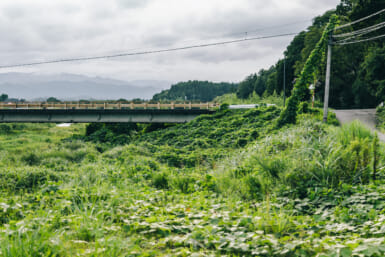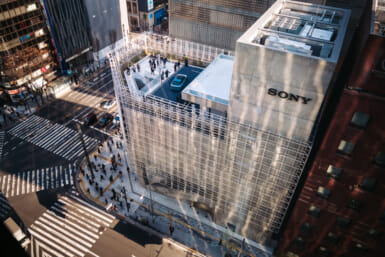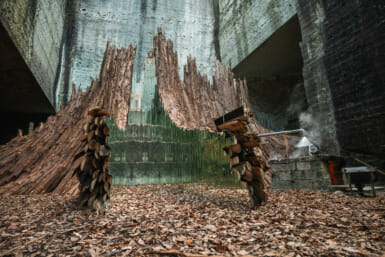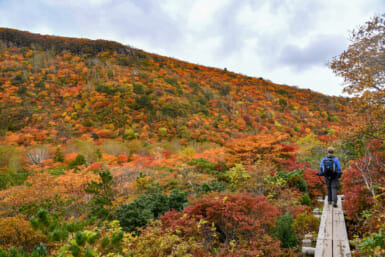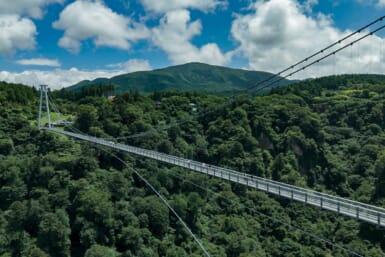Komatsu, located in the southwestern region of Ishikawa Prefecture, is a city rich in history, traditional arts and natural vistas. Just 30 minutes from Kanazawa, Komatsu enjoys a prime location between the Sea of Japan and the sacred Mount Hakusan, one of Japan’s Three Holy Mountains alongside Mount Fuji and Mount Tateyama. Thanks to its unique geography, Komatsu offers visitors an array of stunning scenery — visitors can take in views of the snow-capped mountains, cycle through a parade of cherry blossom trees and breathe in the refreshing sea breeze along the beach.
Gazing at Komatsu’s landscapes, one has the sense that they’re in a world far removed from the urban sprawl. But getting there is surprisingly easy, with direct flights from major cities, convenient highway access and the extended Hokuriku Shinkansen stopping directly at Komatsu Station. From Tokyo, Komatsu is just a one-hour flight. Whether you’re drawn to stunning natural landscapes, centuries-old craftsmanship or delicious cuisine, Komatsu is your gateway to memorable adventures.
Here are five fascinating things to do in Komatsu that make it well worth a visit.
 002.jpg)
Photo courtesy of Komatsu City Tourist Center
Explore a Site of Spiritual Rebirth at Natadera Temple
Records suggest that Natadera Temple was founded over 13 centuries ago, when the monk Taicho established the site to venerate Mount Hakusan as a sacred place and to spread the nature-based wisdom he gained in his personal discoveries. The temple’s peaceful gardens, carp ponds and three-storied pagoda have earned Natadera a prestigious star in the Michelin Green Guide. The temple’s surrounding woodlands have remained untouched, preserving the same scenic view that previous generations honored.
The unique natural rock formations of the cliff are believed to house mystical sites of reincarnation, revered by followers of the Hakusan faith. You can experience your own ritual of rebirth at the caves adjoining the temple’s main hall, where the womb-like interior will symbolically usher in a new chapter of life.

Photo courtesy of Komatsu City Tourist Center
See Stunning Caves and Quarries — and a Giant Buddha Head
Komatsu boasts a rich heritage of stone quarrying and craftsmanship. This legacy is exemplified by Komatsu Castle, fortified in 1576, which showcased advanced stonemasonry techniques of the time. Stones were meticulously placed flush against each other, creating an impressive patchwork design. This tradition of craftsmanship continued to evolve and thrive, with Komatsu’s minerals playing a vital role in the modern world. Kanagaso stone, renowned for its durability and resistance to moisture, has played key parts in the construction of several famous buildings across Japan, including the National Diet Building in Tokyo.
The Takigahara cavern was once one of the nation’s top quarries. Though no longer in operation, the site has been revitalized by its fifth-generation owner, who opened the site and conducts guided tours around the premises. Nearby, you can visit the city’s last active quarry and catch a glimpse of Komatsu’s stone heritage with live demonstrations of traditional quarrying techniques.
Just a 25-minutes bus ride from Komatsu Station lies the Hanibe Caves, where you’ll be greeted by a towering 15-meter tall Buddha head. This grand sculpture, crafted by local master artisan Yuma Tsugata, symbolizes a heartfelt wish for world peace. The caves, originally remnants of old quarries, have been transformed into a captivating art gallery, featuring dramatic sculptures of demons and monsters that depict a vivid Buddhist hellscape.
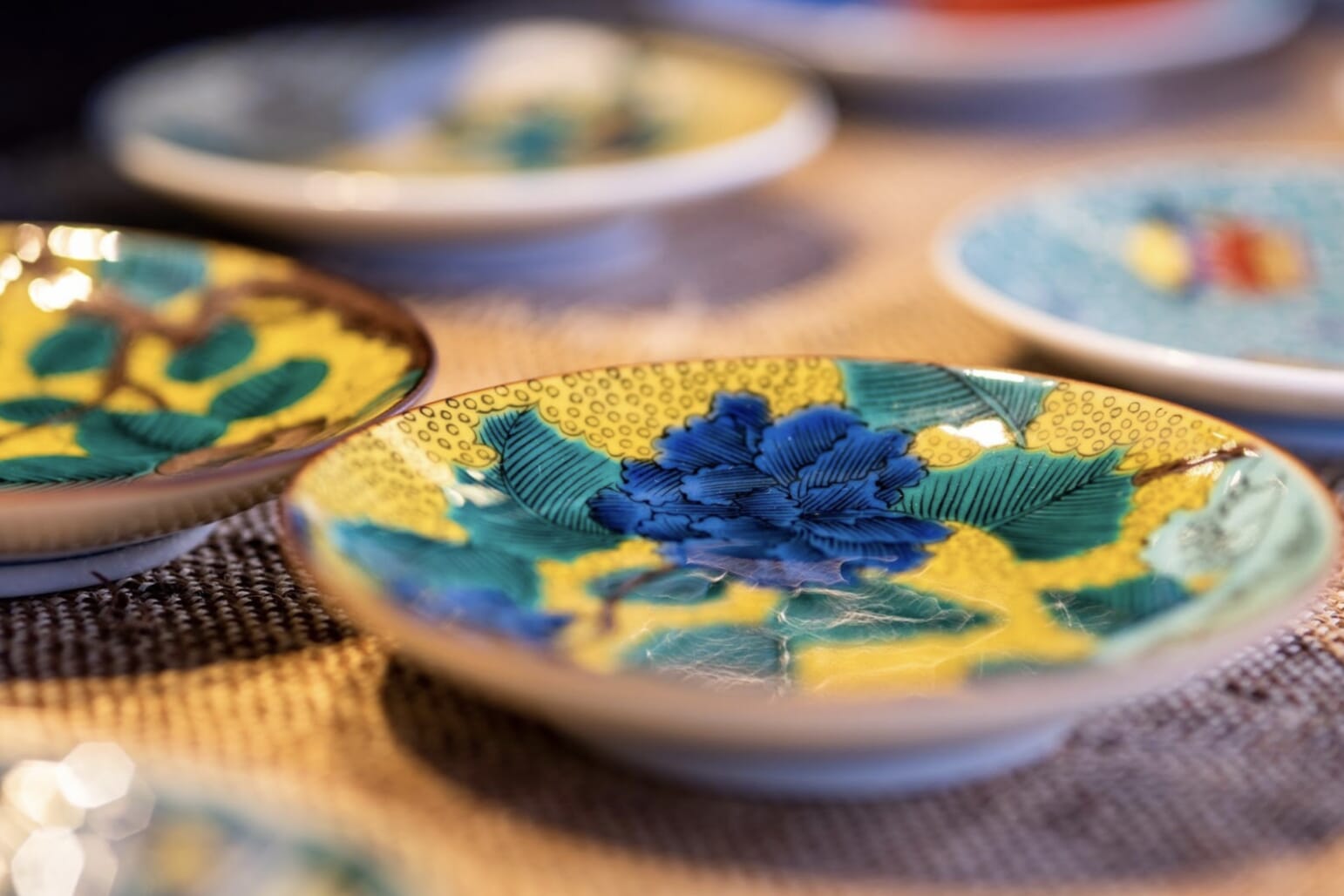
Photo courtesy of YUKAKO HASHIMOTO
Get an Up-Close Look at Legendary Kutani Ceramics
Kutani ceramics, or Kutani-yaki, are traditional Japanese porcelain pottery that dates back to 1655 and are prized for their use of strikingly vivid colors. Pigments are painted over the ceramic’s glazed surface and fired in the kiln again — resulting in beautiful and bold pottery. Komatsu is not only a major producer of Kutani ceramics, but it’s also the sole source of the raw material, Hanasaka stone, essential to its creation.
Housed inside strikingly futuristic architecture, Cerabo Kutani is a Kutani ceramics hub featuring a clay factory, gallery, experience studio, rental space and outdoor clay room. The on-site factory has been producing clay for over 60 years. You can observe the work that’s done here. from grinding Hanasaka stone to crafting high quality clay; support local artists by purchasing displayed works; and join a hands-on workshop to sculpt and paint your own wares to bring home.
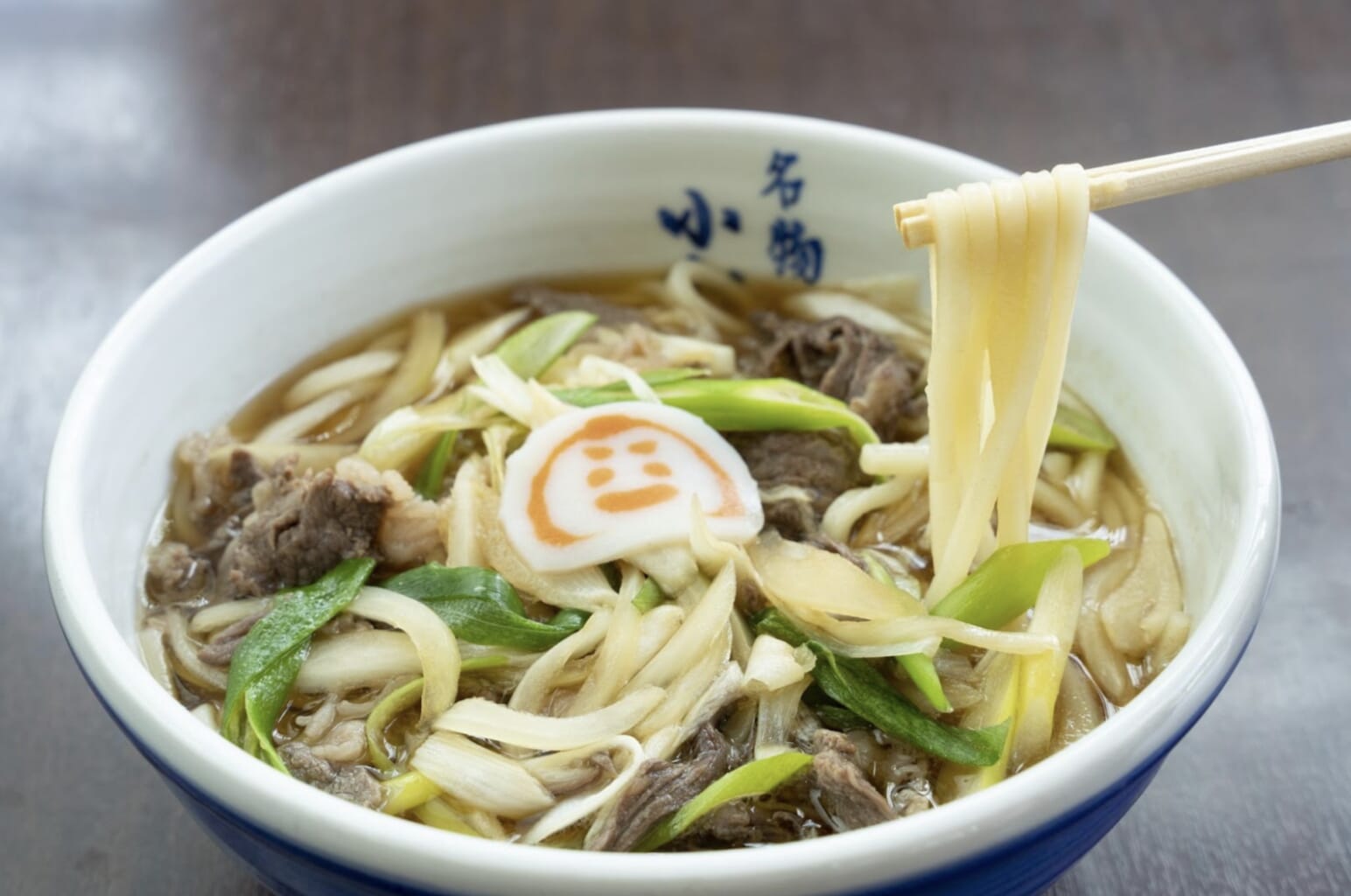
Savor Local Flavors
With easy access to the land and sea, Komatsu has a rich variety of regional specialties. One of its most famous dishes is Komatsu udon, a unique style of udon that originated more than 300 years ago. It’s slightly thinner than typical udon noodles, and its signature springy and chewy texture sets it apart. Komatsu udon has eight self-established rules for authenticity, including using locally sourced ingredients and water from Mount Hakusan; additionally, the dashi stock must be made with mackerel and herring with a generous amount of kombu kelp.
In winter, crabs are a local delicacy. Kora-age is a standout dish: deep-fried crab shells stuffed with premium Kano crab meat native to Ishikawa. The dish was originally created at a local restaurant, Nagaoki, when a customer requested a seasonal winter plate. It has become so popular that other eateries across the area now also serve their own interpretations, some adding egg, cheese or crab roe.
While Kyoto may be the first city that comes to mind when talking about Japanese tea, tea culture can also be traced far back into the history of Komatsu. Choboya Chaho, a 370-year-old tea shop, still stands today, offering experiences where visitors can roast their own Kaga bocha, a tea unique to Ishikawa made from roasted tea stems.
For a gourmet experience, Komatsu boasts several renowned restaurants and traditional inns. Korokuan is a 170-year-old establishment founded by Hisa Miyagi, a samurai’s daughter, and is just a 10-minute walk from Komatsu Station. The restaurant serves kaiseki courses and a variety of bento, all inside a traditional machiya wooden house with a tranquil garden view. Kitahachi, originally a fish shop founded in 1954, is now a popular hot spring inn and ryotei restaurant that specializes in local seafood. Dishes include grilled abalone, blackthroat seaperch, sweet shrimp sashimi and crabs that weigh over 800 grams.

Photo courtesy of Komatsu City Tourist Center
Soak in Komatsu’s Abundant Natural Beauty
Komatsu’s natural landscapes offer spectacular views year-round. Kibagata Park has one of the best viewpoints of Mount Hakusan, where the mountain reflects across the water of the lake for a stunning mirrored effect. While the snow covers the mountain during winter, a flood of hydrangeas add a brilliant pop of color in the summertime. Ikoi-no-mori Park has a sprawling park, two lakes and a hiking trail that leads to another great view of Mount Hakusan and the surrounding mountain range. Rojo Park is Komatsu’s most popular spot, beloved by both locals and visitors. It’s a great venue for hanami, picnics underneath the blooming cherry blossoms.
For a deeper retreat into nature, venture into the charming hamlet of Seiryo and head to Seseragi-no-sato Recreation Center for a tranquil escape. Soak in the healing footbath and onsen, feast on a buffet of comforting dishes made by local grandmas and fall asleep under the stars for a truly rejuvenating experience.
More Information
From natural wonders and ancient temples to culinary delights and artistic traditions, Komatsu has much to offer.
Consider renting a bicycle to take in all the sights of the city at your own pace. Komatsu Station offers rental bikes for just ¥300 for the whole day with a map full of local recommendations along the route. The newly introduced app-supported electric bike sharing service supplies an even more convenient and relaxing option, with e-bikes available for rent and return at any port 24/7.
Start planning your Komatsu adventure here.

